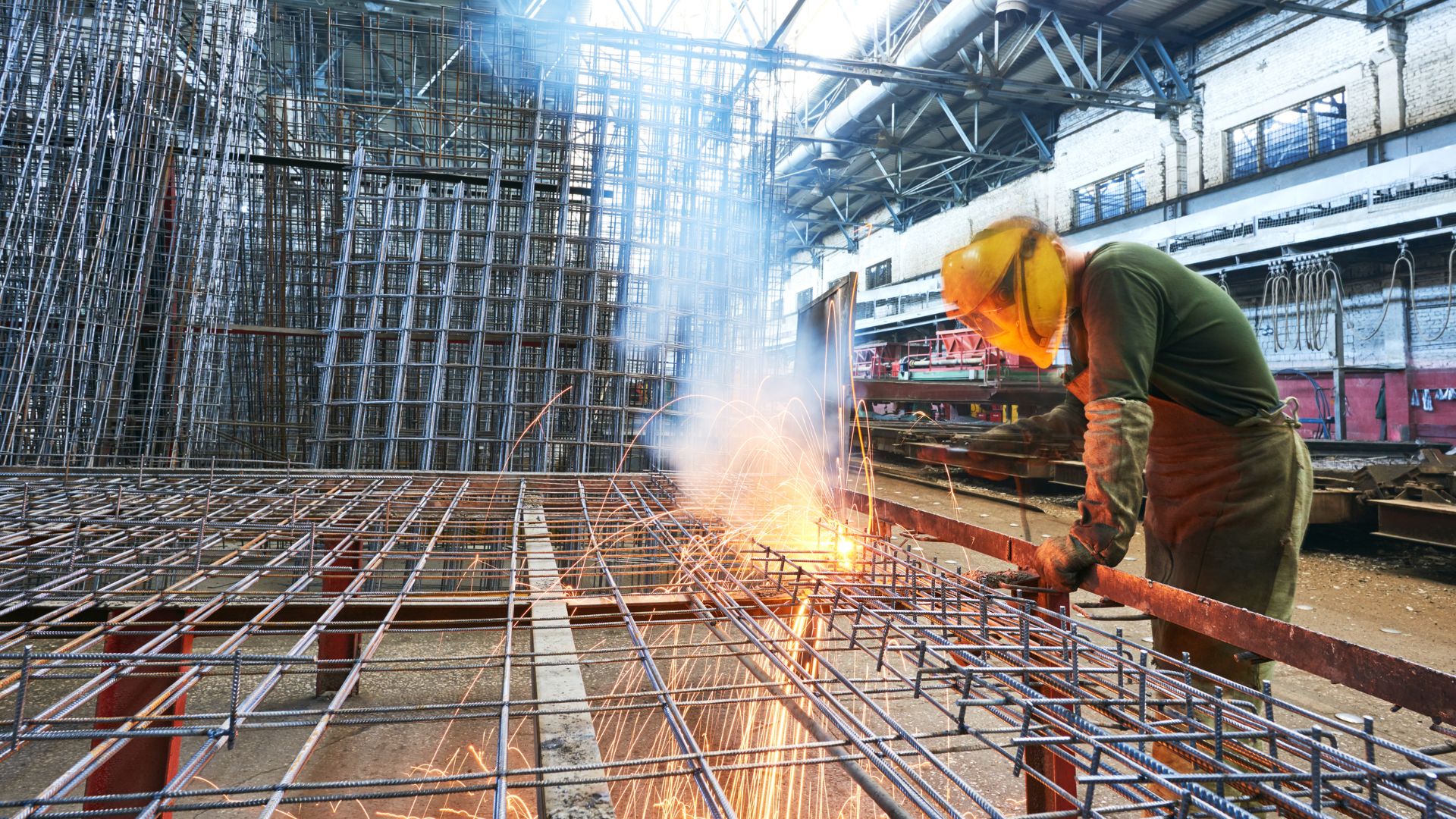Spawanie w ekstremalnych warunkach stanowi wyjątkowe wyzwanie, które wymaga specjalistycznych technik i sprzętu. Niezależnie od tego, czy mamy do czynienia z ekstremalnymi temperaturami, wysokim ciśnieniem czy środowiskiem podwodnym, spawacze muszą się dostosować, aby zapewnić integralność i bezpieczeństwo swojej pracy. W tym artykule omówiono metody i wyzwania związane ze spawaniem w tak wymagających sytuacjach.
Spawanie w ekstremalnych temperaturach
Spawanie wysokotemperaturowe
Środowiska wysokotemperaturowe, takie jak te występujące w przemyśle lotniczym, elektrowniach i niektórych procesach produkcyjnych, wymagają spoin, które mogą wytrzymać znaczne naprężenia termiczne.
Wyzwania:
- Rozszerzalność cieplna: Metale rozszerzają się i kurczą wraz ze zmianami temperatury, potencjalnie prowadząc do wypaczeń i pęknięć.
- Utlenianie: Podwyższone temperatury zwiększają szybkość utleniania, zagrażając integralności spoiny.
- Degradacja materiału: Długotrwała ekspozycja na wysokie temperatury może pogorszyć właściwości materiałów spawalniczych.
Techniki:
- Podgrzewanie wstępne i obróbka cieplna po spawaniu (PWHT): Wstępne podgrzanie materiału przed spawaniem zmniejsza szok termiczny, podczas gdy PWHT zmniejsza naprężenia szczątkowe.
- Stosowanie stopów żaroodpornych: Wybór stopów takich jak Inconel, Hastelloy i niektórych stali nierdzewnych, które zachowują swoją wytrzymałość i odporność na utlenianie w wysokich temperaturach.
- Kontrolowane środowisko spawania: Wykorzystanie osłony gazu obojętnego (takiego jak argon lub hel) w celu ochrony obszaru spoiny przed utlenianiem.
Spawanie niskotemperaturowe
Spawanie niskotemperaturowe lub kriogeniczne ma kluczowe znaczenie w branżach takich jak przemysł naftowy i gazowy, gdzie rurociągi i zbiorniki magazynowe muszą pracować w warunkach zamarzania.
Wyzwania:
- Kruchość: Metale mogą stać się kruche i stracić plastyczność w niskich temperaturach, co prowadzi do pękania.
- Kurczenie termiczne: Gwałtowne chłodzenie może spowodować skurcz termiczny, powodując naprężenia wewnętrzne i potencjalną awarię.
Techniki:
- Podgrzewanie: Stopniowe podgrzewanie materiału przed spawaniem, aby zminimalizować szok termiczny i zapobiec pękaniu.
- Stopy niskotemperaturowe: Wykorzystanie materiałów takich jak austenityczna stal nierdzewna i niektóre stopy niklu, które zachowują swoją wytrzymałość w niskich temperaturach.
- Specjalistyczne procedury spawalnicze: Wdrożenie powolnego chłodzenia i kontrolowanych parametrów spawania w celu zmniejszenia naprężeń szczątkowych.
Spawanie podwodne
Spawanie podwodne jest niezbędne do konserwacji i naprawy statków, konstrukcji morskich i podwodnych rurociągów. Jest ono podzielone na dwa główne rodzaje: spawanie na mokro i spawanie na sucho (spawanie hiperbaryczne).
Spawanie na mokro
Wyzwania:
- Porażenie prądem: Obecność wody zwiększa ryzyko porażenia prądem.
- Widoczność: Słaba widoczność pod wodą może utrudniać spawaczowi wyraźne widzenie spoiny.
- Kruchość wodorowa: Wodór obecny w wodzie może dyfundować do metalu spoiny, powodując kruchość i pękanie.
Techniki:
- Spawanie łukiem krytym (SMAW): Używanie wodoodpornych elektrod zaprojektowanych do użytku pod wodą w celu wytworzenia stabilnego łuku.
- Izolacja: Stosowanie gumowanych rękawic i odzieży ochronnej w celu zminimalizowania ryzyka porażenia prądem.
- Kontrolowane środowisko: Wykorzystanie specjalnych technik spawania w celu kontrolowania łuku i zminimalizowania absorpcji wodoru.
Spawanie na sucho (spawanie hiperbaryczne)
Wyzwania:
- Kompleksowa konfiguracja: Wymaga stworzenia suchej komory ciśnieniowej wokół miejsca spawania, co może być czasochłonne i kosztowne.
- Różnice ciśnień: Zarządzanie ciśnieniem wewnątrz komory w celu dopasowania go do ciśnienia otaczającej wody, aby uniknąć zawalenia się konstrukcji.
Techniki:
- Budowa siedliska: Budowa szczelnej komory (siedliska) wokół obszaru spawania w celu stworzenia suchego środowiska.
- Spawanie łukiem wolframowym (GTAW): Preferowany ze względu na precyzję i kontrolę w suchym, kontrolowanym środowisku komory hiperbarycznej.
- Zarządzanie ciśnieniem: Staranne kontrolowanie ciśnienia wewnętrznego siedliska w celu zapewnienia bezpieczeństwa i stabilności.
Spawanie w środowiskach wysokociśnieniowych
Spawanie wysokociśnieniowe jest powszechne w branżach takich jak eksploracja głębin morskich i niektóre zastosowania przetwarzania chemicznego.
Wyzwania:
- Integralność strukturalna: Wysokie ciśnienie może powodować deformację lub uszkodzenie materiałów, jeśli nie jest odpowiednio zarządzane.
- Zagrożenia bezpieczeństwa: Zwiększone ryzyko katastrofalnej awarii z powodu naprężeń wywołanych ciśnieniem.
Techniki:
- Materiały o grubych ściankach: Zastosowanie grubszych materiałów i komponentów zaprojektowanych tak, aby wytrzymać wysokie ciśnienie.
- Zaawansowane techniki spawania: Zastosowanie technik takich jak spawanie wiązką elektronów (EBW) i spawanie wiązką laserową (LBW) zapewnia precyzję i wytrzymałość.
- Próba ciśnieniowa: Przeprowadzanie rygorystycznych testów ciśnieniowych przed i po spawaniu w celu zapewnienia integralności połączeń spawanych.
Wnioski
Spawanie w ekstremalnych warunkach wymaga dogłębnego zrozumienia materiałów, czynników środowiskowych i specjalistycznych technik, aby zapewnić pomyślne wyniki. Spawanie w wysokich i niskich temperaturach, spawanie pod wodą i spawanie wysokociśnieniowe stanowią unikalne wyzwania, które wymagają indywidualnego podejścia. Dzięki zastosowaniu zaawansowanych technik, takich jak podgrzewanie wstępne, stosowanie specjalistycznych stopów i tworzenie kontrolowanych środowisk spawania, spawacze mogą sprostać tym wyzwaniom i tworzyć wysokiej jakości, niezawodne spoiny.
Ponieważ branże nadal przesuwają granice tego, co jest możliwe, zapotrzebowanie na wykwalifikowanych spawaczy zdolnych do pracy w ekstremalnych warunkach będzie tylko rosło. Bycie na bieżąco z najnowszymi osiągnięciami i najlepszymi praktykami w technologii spawania jest niezbędne do spełnienia tych wymagań oraz zapewnienia bezpieczeństwa i trwałości krytycznych konstrukcji i komponentów.

